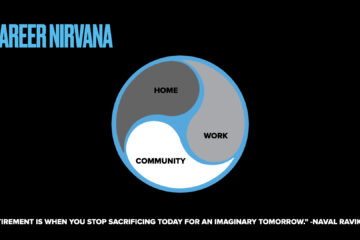Intrapreneurs are starters who champion change inside established companies.
These skilled and determined people are often salaried employees who want to enjoy their job more. They do this by reinventing how they work at a company they trust. While intrapreneurs shake things up in more controlled environments, they share a similar innovative spirit with entrepreneurs building their own company. They challenge the status quo for larger companies smart enough to listen.
Companies that recognize the value of intrapreneurship stay ahead of the market. They do so by not falling too far behind the innovation curve. Smart companies go further by emboldening intrapreneurs. They do so with trust, resources, and a culture that encourages their passionate employees to get weird.
This sounds cool, but there’s a lot of moving parts when steering a cruise ship (large companies) compared to a little speed boat (startups). Add the fact that no matter how big a company is, change is hard, everyone fears it, and advocating for change is more difficult with more branches on the decision tree. As if it’s not complex enough, new ideas will always feel risky to those in power as well. This makes climbing the ladder of progress painfully slow and poses a quagmire for intrapreneurs: constant oversight and a lack of action can lead to burnout.
Intrapreneurial burnout usually translates into employees leaving the company or choosing to play it safe. When conformity sets in, intrapreneurs lose their edge and misinterpret the market. To avoid this hazard, intrapreneurs must keep making a ruckus and companies must help preserve innovative vibes by motivating intrapreneurs with action.
Extra Shot
Big, small, old, and new businesses can all do more when the people they trust find fresh ways to collaborate throughout the community.
Shifting the perspective, it’s good for entrepreneurs when more inspired intrapreneurs are connected throughout an ecosystem, but collaboration with intrapreneurs requires a long-term approach.
One reason is that intrapreneurs can be hard to identify within a startup community. Many intrapreneurs are also quick to say they’re not entrepreneurial, which makes it even harder to uncover these hidden leaders. If you’re a founder able to connect with these unicorns in the balloon factory, be quick to encourage their fresh ideas. Show interest in their latest innovation and invite them to where other entrepreneurs are gathering. Everyone is entrepreneurial to some degree, so the more intrapreneurs feel innovative energy, the more they’ll participate within the community.
Extra Shot
Are you an intrapreneur? If you shake things up and fuel positive change in an existing organization, You Don’t Need This Book is as much for you as it is for students, side hustle enthusiasts, or entrepreneurs building new companies. Another interesting read is Free Prize Inside by Seth Godin. There’s an entire section focused on championing new ideas into existing companies.
Entrepreneurs need intrapreneurs, and intrapreneurs need entrepreneurs. Intrapreneurs stay innovative by learning from entrepreneurs who are building what’s next. In exchange, intrapreneurs offer entrepreneurs established wisdom and access to customers. Intrapreneurs may not always be the decision makers, but they can still share resources, feedback, and meaningful introductions. This elevates entrepreneurs and fuels more profitable initiatives led by intrapreneurs.
Such shared momentum translates into existing companies getting more excited by profitable progress and often converts to an increase in their company’s community involvement. Companies become more willing to reinvest in intrapreneurship and ongoing innovation is liberated by an entrepreneurial mindset. As more existing companies thicken their connectivity within the startup community and entrepreneurial ecosystem, more ways to collaborate will emerge. Over time, the rising tide of intrapreneurial and entrepreneurial activity compounds into community-driven partnerships that raises all ships through layered economic growth.
